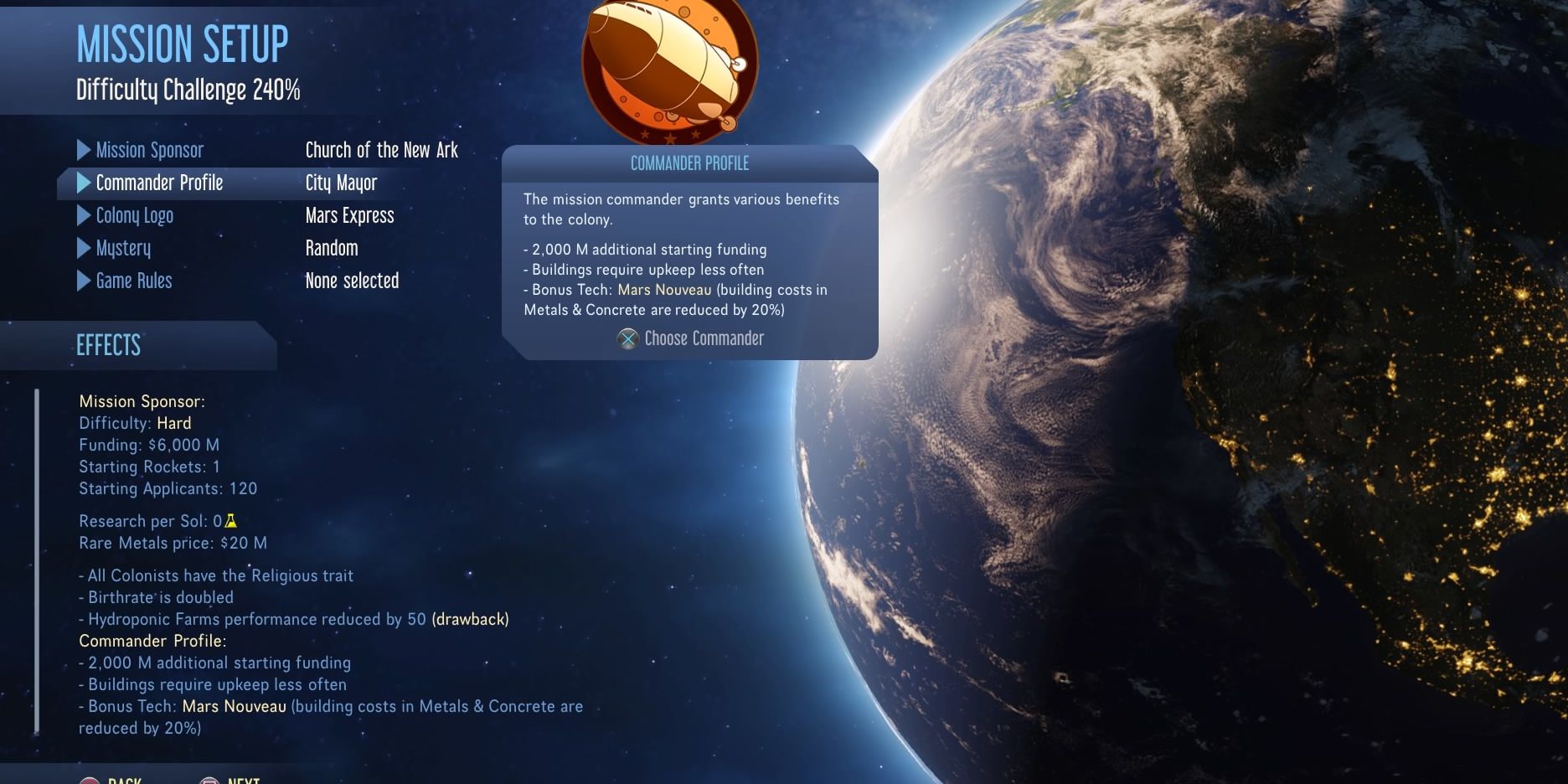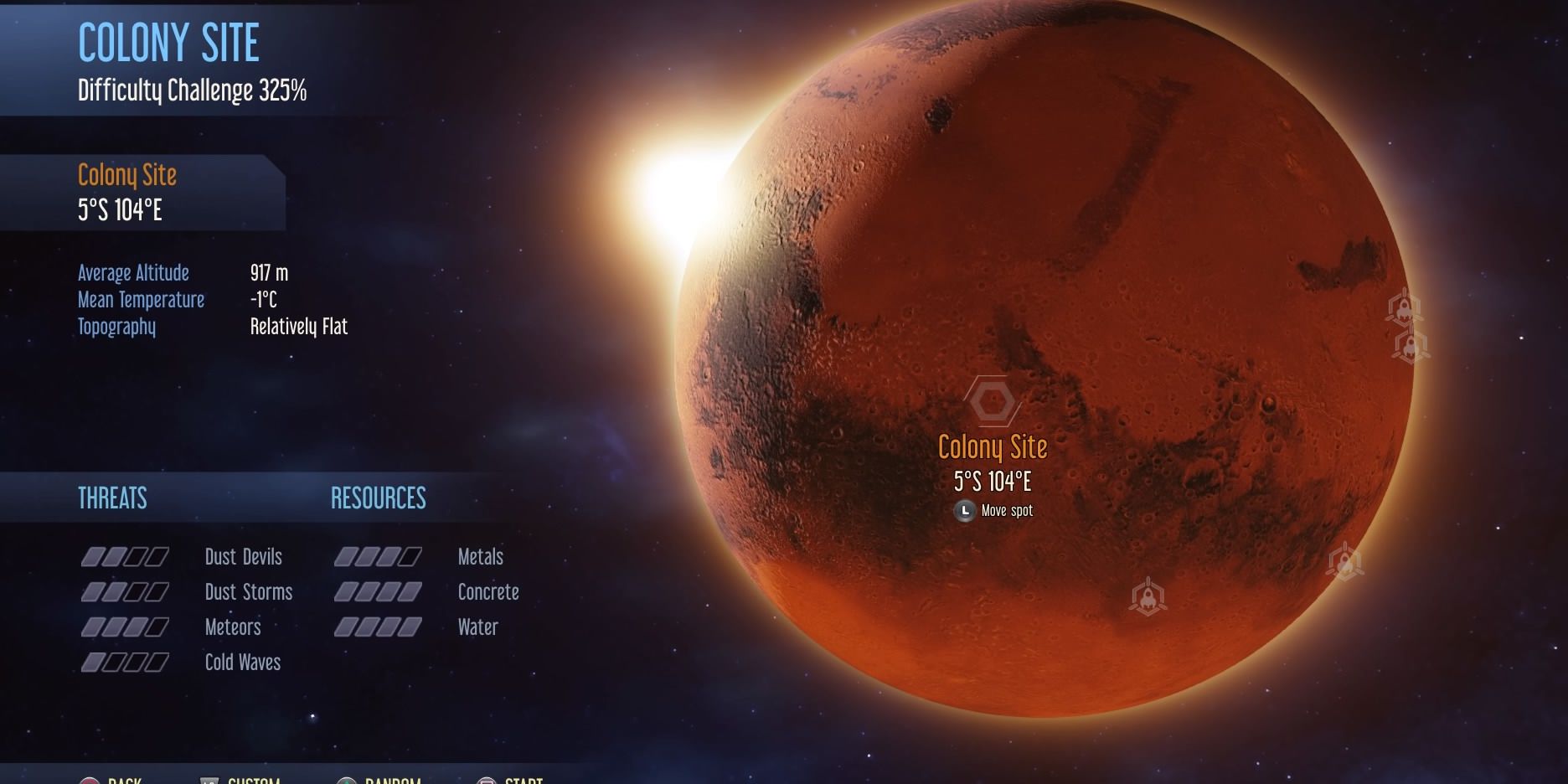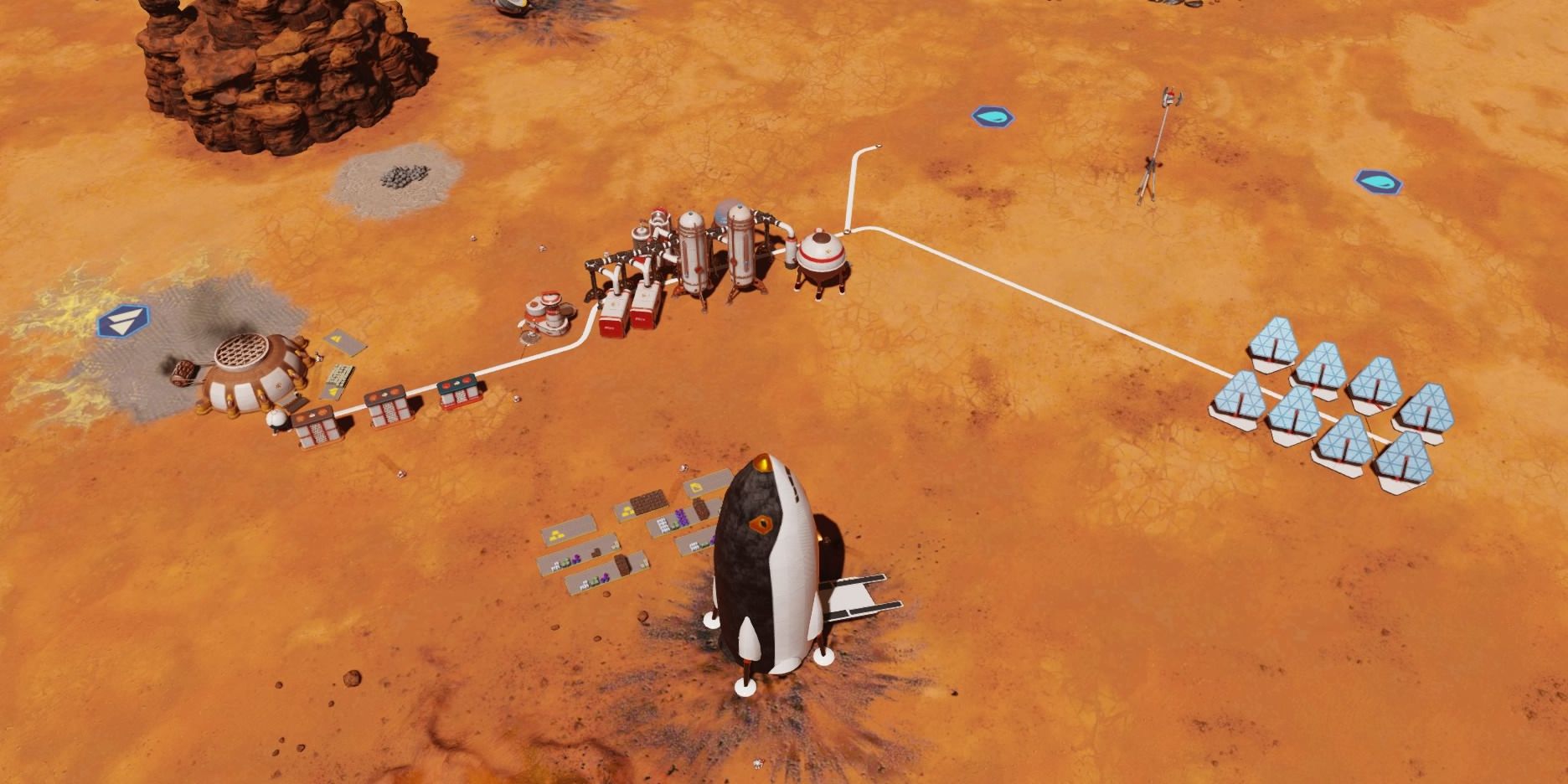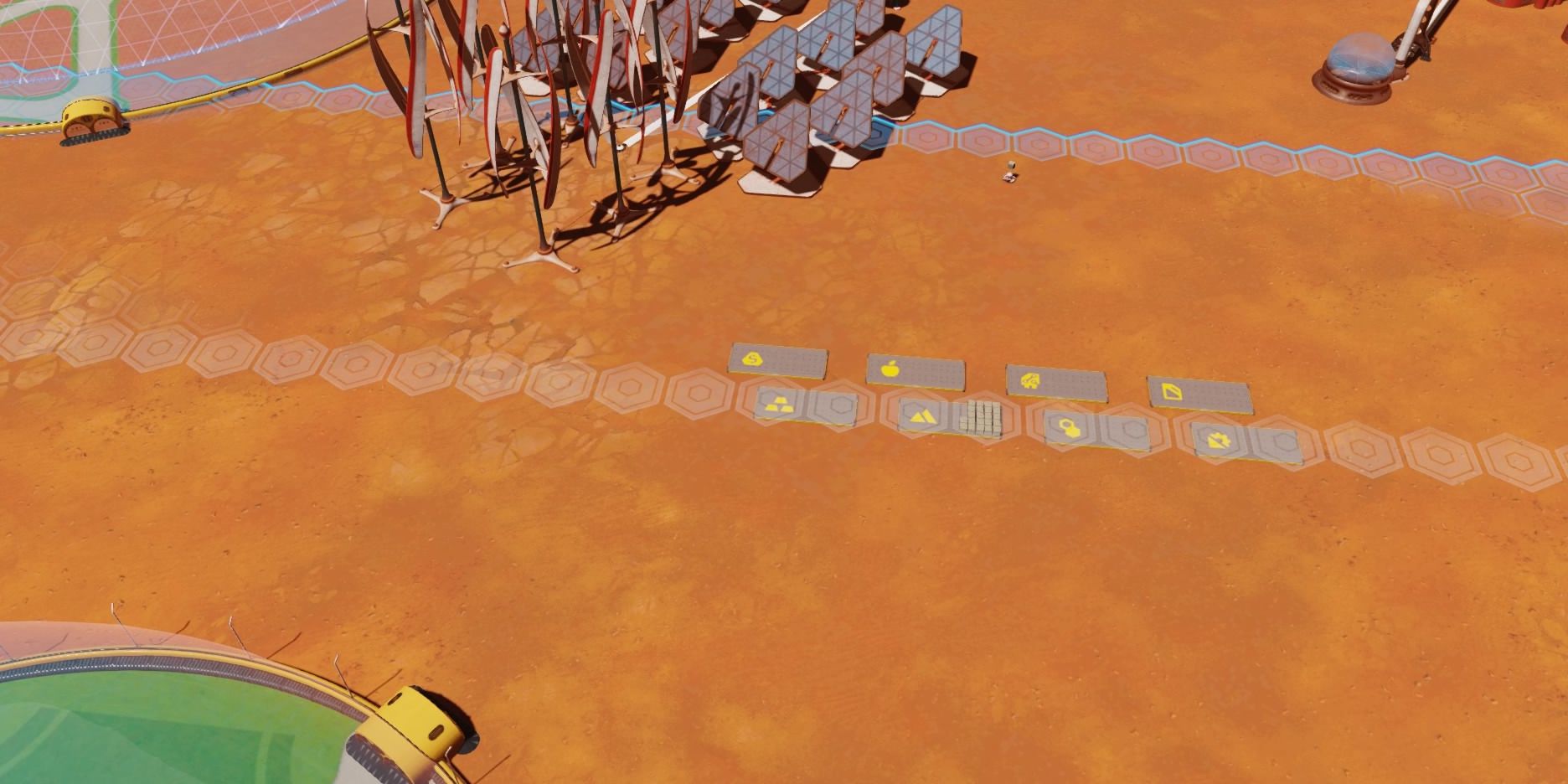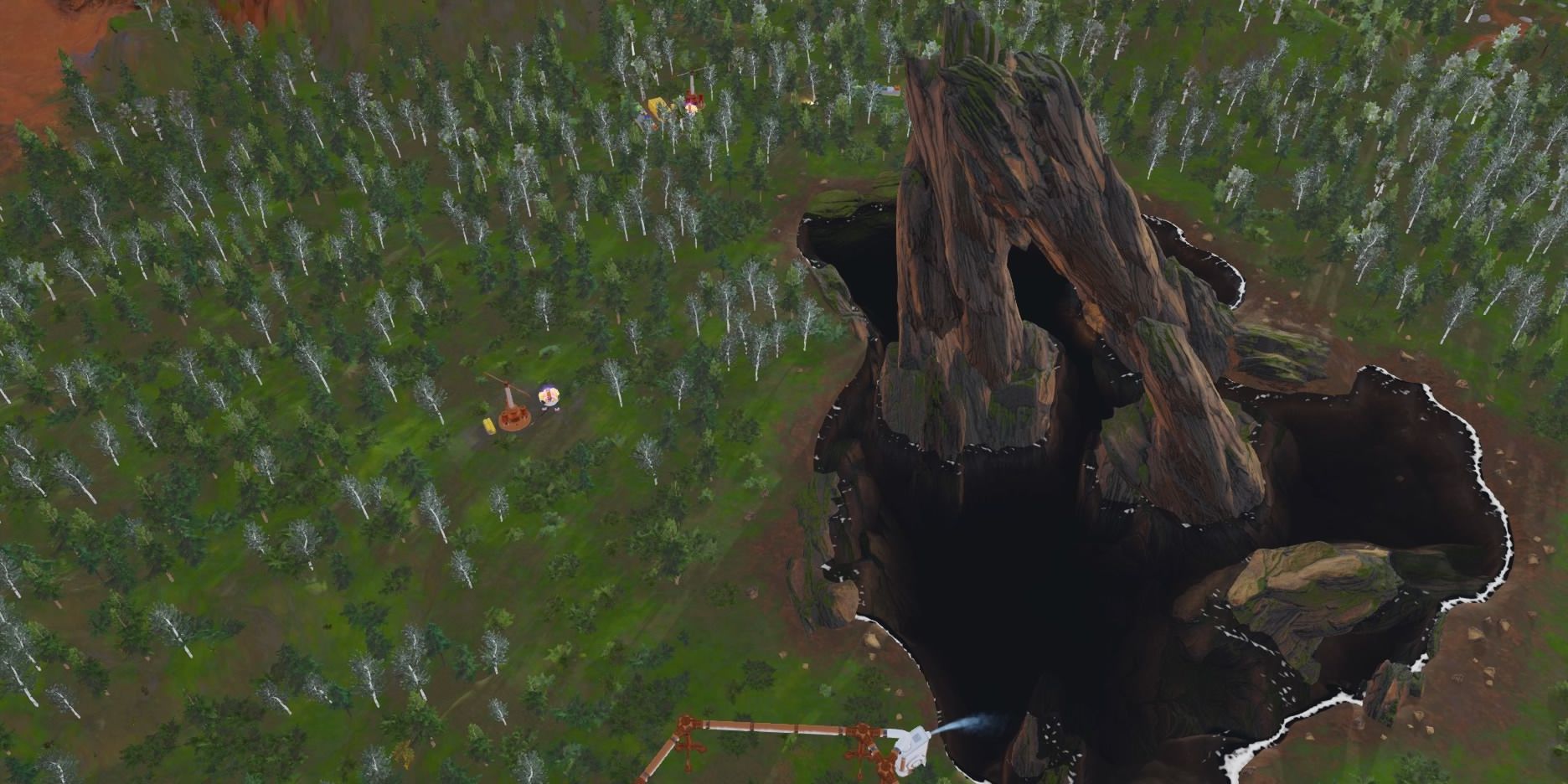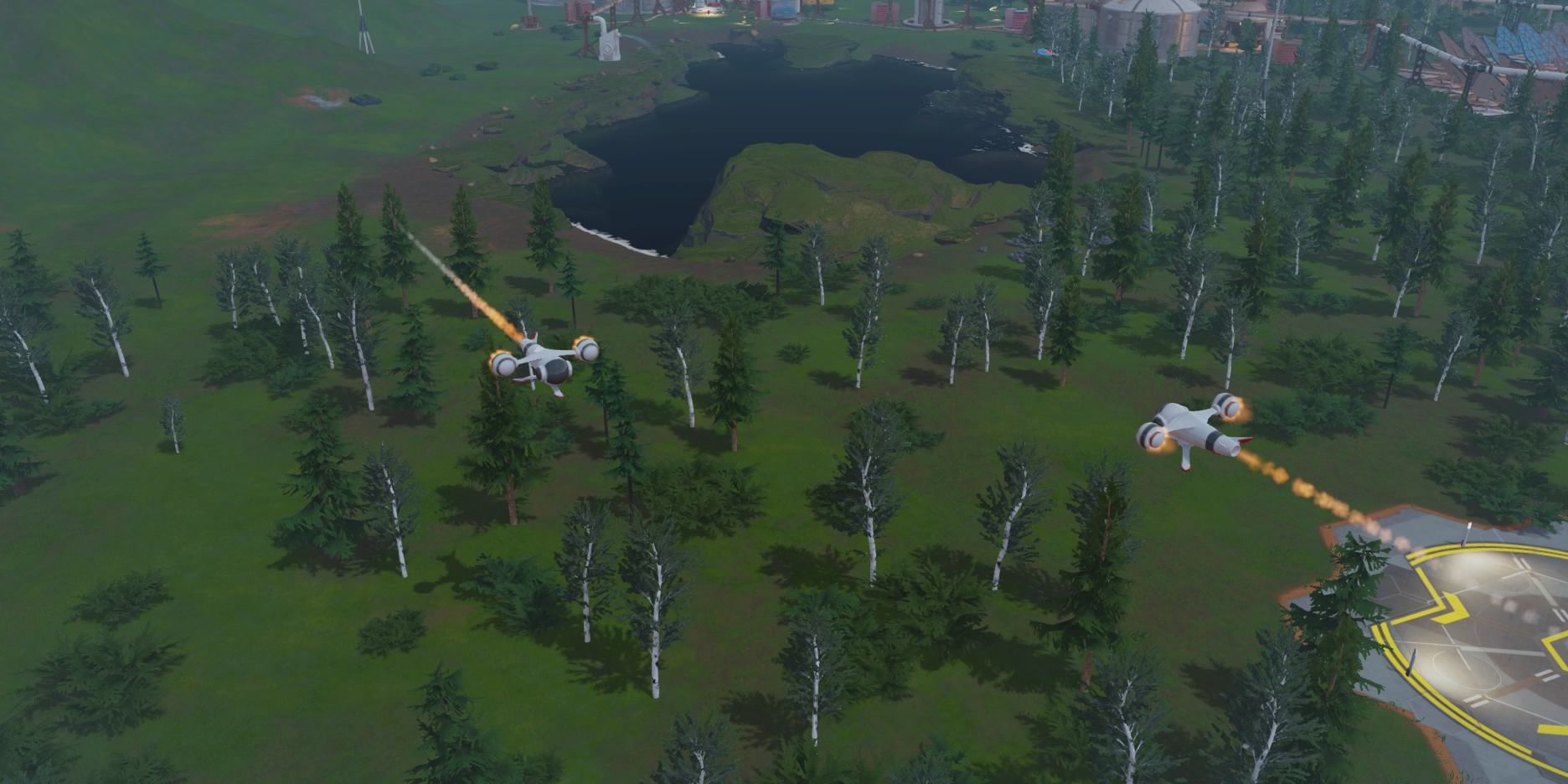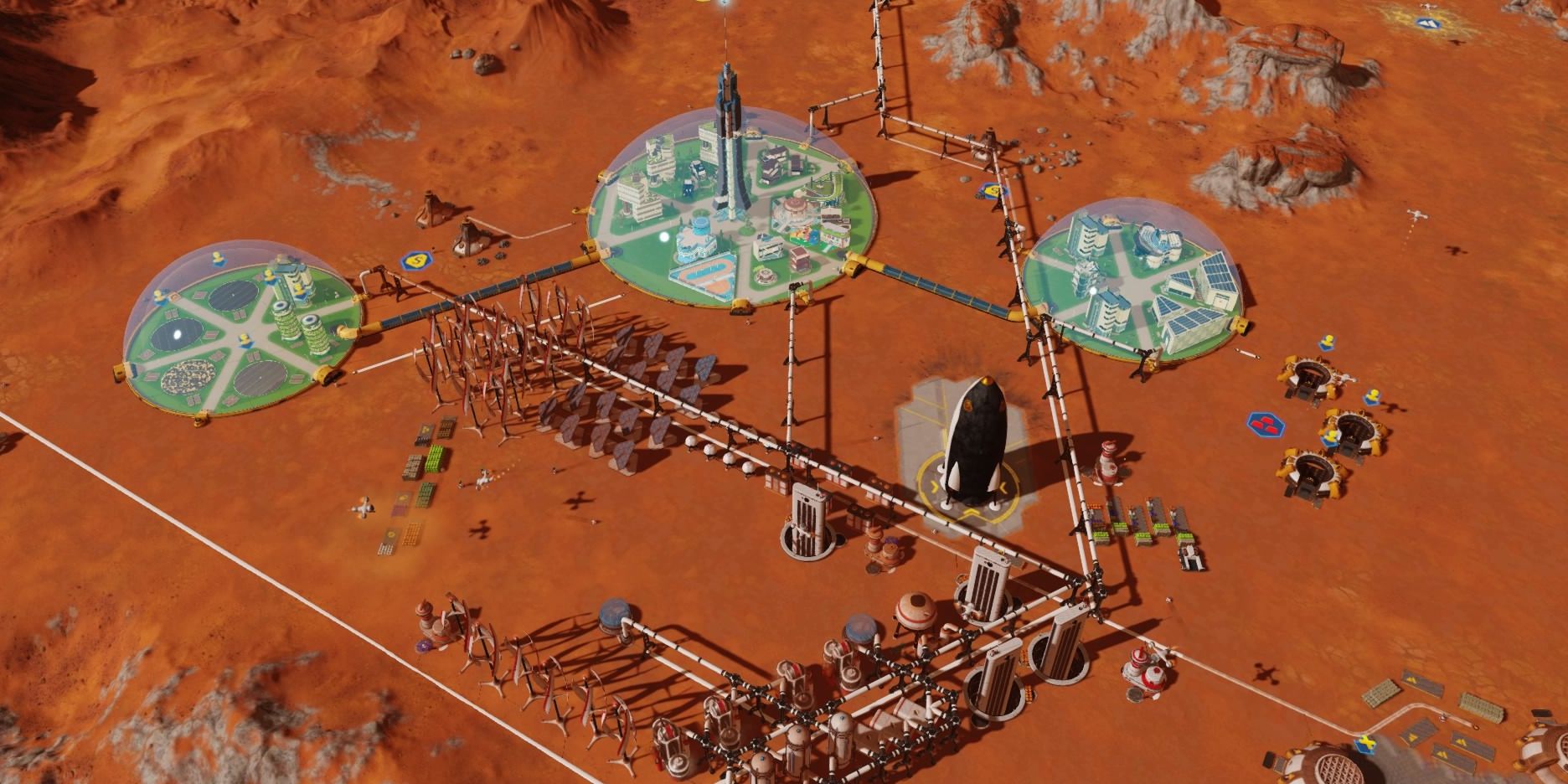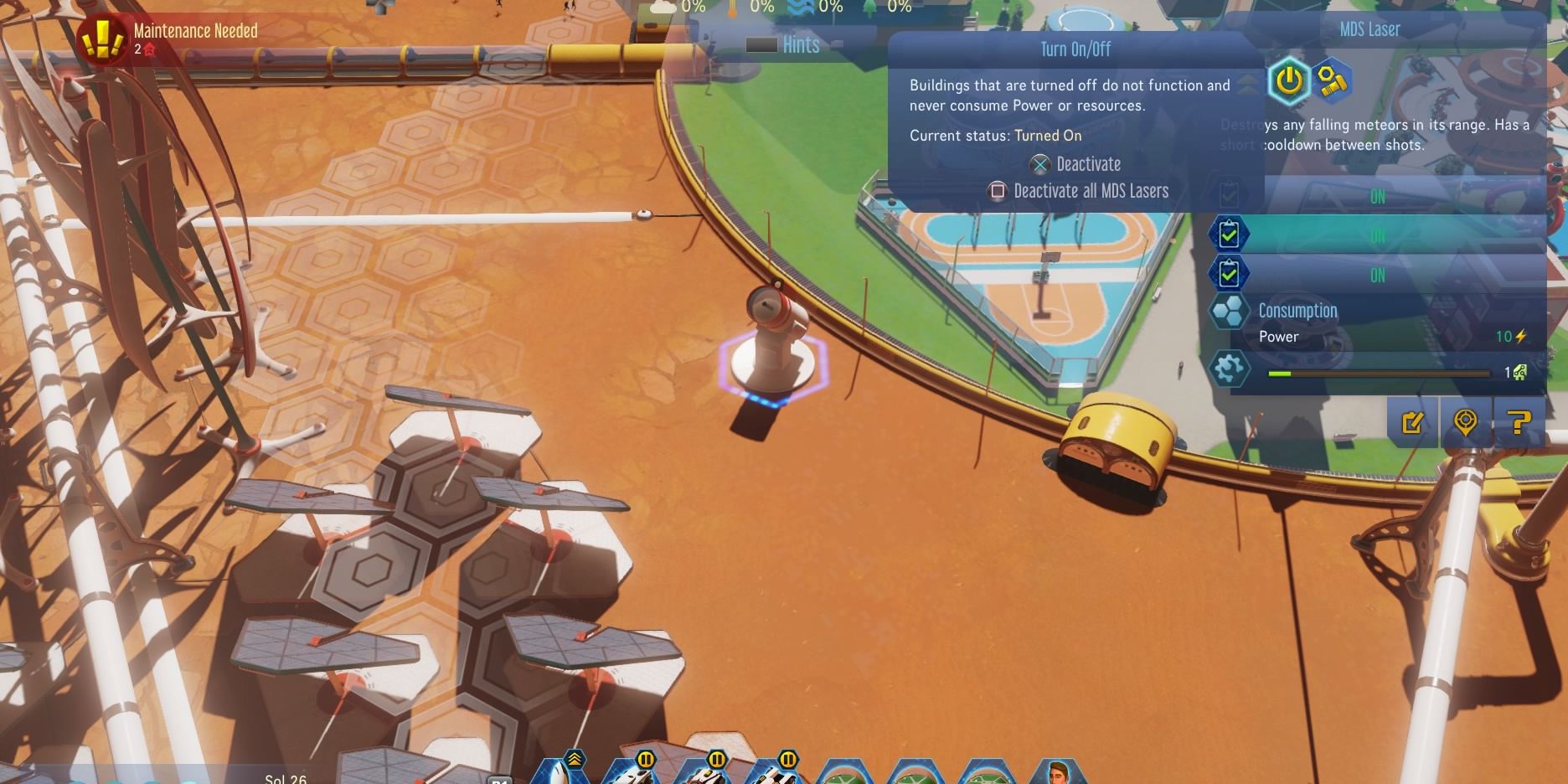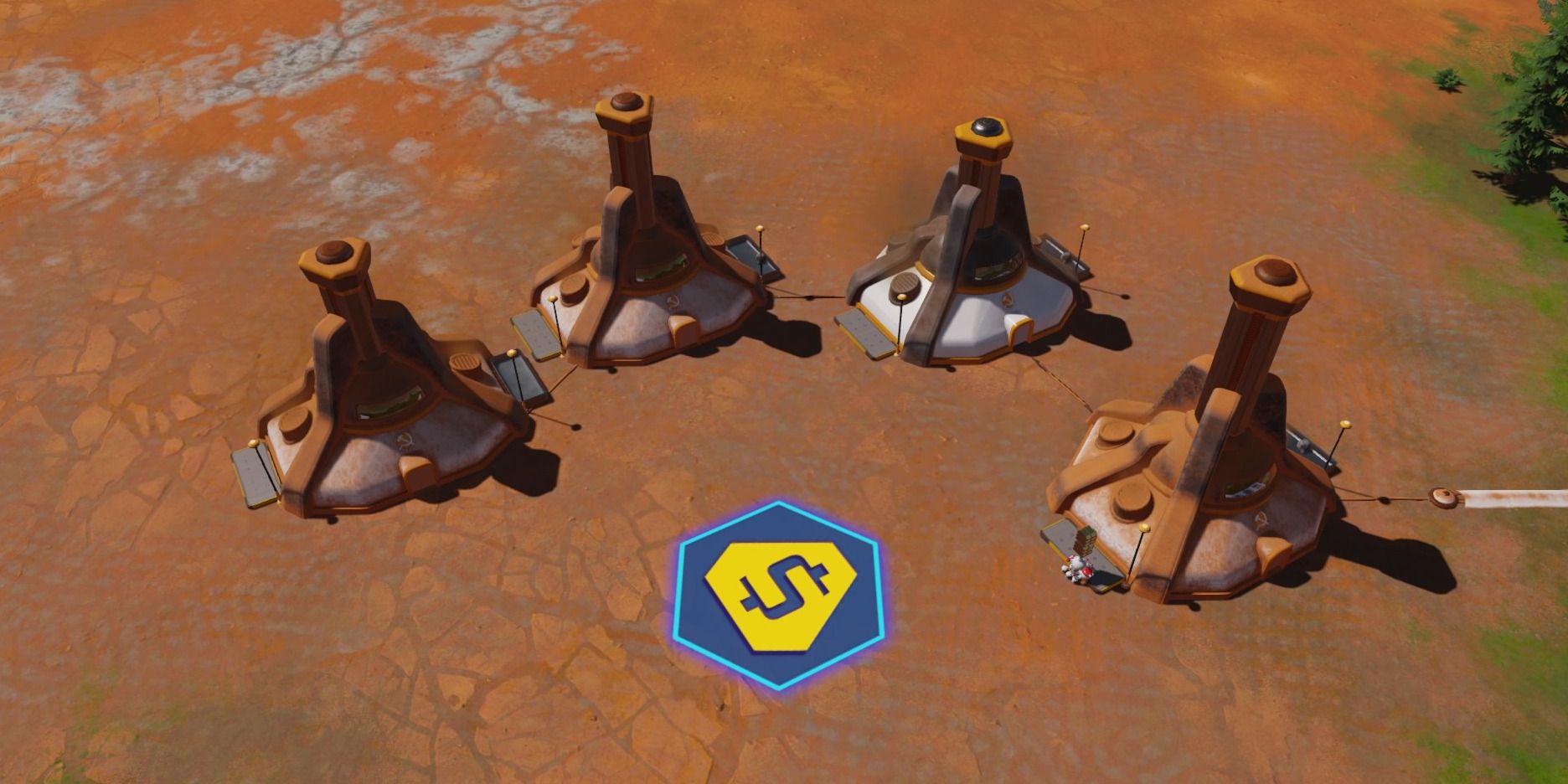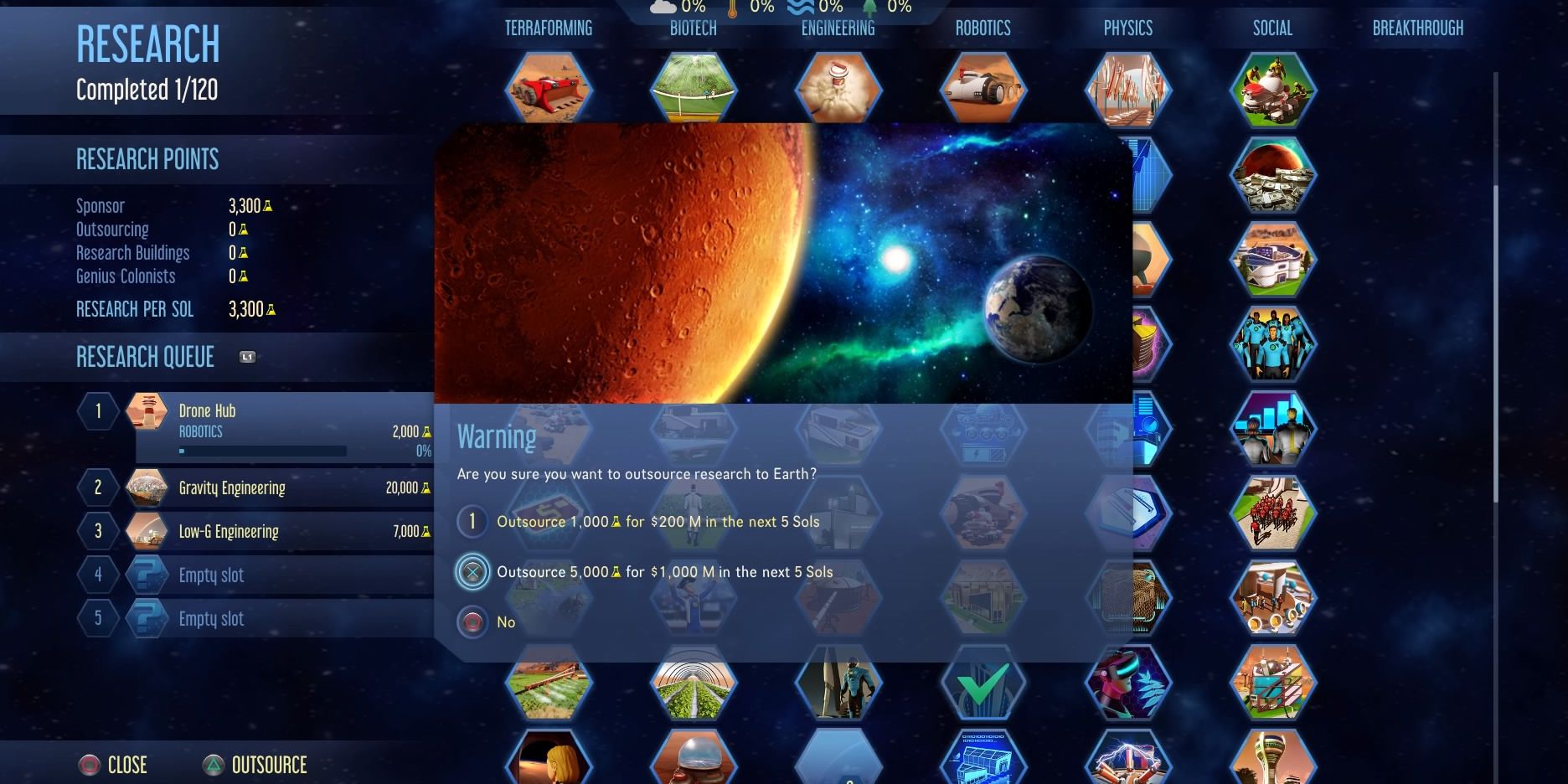Surviving Mars is the latest city-builder from Haemimont Games, the talented developers behind Tropico 3-5. Surviving Mars swaps the lush, vibrant islands of Tropico (now also available on Android) for the dusty, desolate landscape of Mars. Haemimont have been continually releasing updates for Surviving Mars, including the Green Planet expansion which allows players to fully terraform the red planet.
As with any city-builder, it can be hard to know where to start. The limited resources, frequent meteor showers, and vast tech-tree can make Surviving Mars overwhelming at first. But, fear not, this guide will outline some crucial tips that all players, new and old, should keep in mind when trying to conquer the new Martian frontier. (If you’re more excited about the lounge than the endless and infinite cosmos, try some of these interior design games.)
Pick The Right Mission Sponsor And Commander
Mission sponsor’s affect each playthrough hugely. While the game presents all of them with a handy difficulty ranking, (from easy to hard) it is worth noting the specifics of each. Each sponsor offers different starting technologies, research, and rare metal prices. Your mission commander also offers different bonus tech or perks, such as increased building durability or an extra rocket. Picking Europe and the rocket scientist should provide a good level of challenge without being too hard or niche.
The Colony Sites Are Not Randomized
Given the sheer number of possible landing sites (50,901), you’d be forgiven for assuming they’re all random, as it’s unlikely you’ll pick the same location twice. However, each location and its breakthrough technologies are predetermined. They do sometimes change when Haemimont rolls out an update though. This means if you’re playing for one specific breakthrough and you don’t find it, you’ll have to try another map. Only enabling the randomized technology rule will alter breakthroughs on identical coordinates.
Organize Resources Early
This might sound obvious, but certain systems in Surviving Mars interact in very damaging ways. All extractors emit dust, something that will degrade all surrounding buildings, but also lower the productivity of any air-based systems, such as MOXIE filters and moisture vaporators.
As such, it is best to ensure your solar farms and domes aren’t right next to your water extractors. Also, moisture vaporators should be kept apart, otherwise they lower each others’ efficiency.
Overlap Drone Hubs And Resource Piles
If you’ve ever found yourself staring at an incomplete building and screaming at your incompetent drones who, for some reason, just won’t gather the necessary resources, it’s probably actually your fault. Drones can only work within range of their hubs, so if you build hubs with no cross-over, you’re essentially creating isolated clusters rather than a unified colony. Overlap each edge of a Hub’s area with the next, and create resource piles in these overlaps. Set each resource to a minimum of five and you should never have construction issues again.
Start Terraforming Early
Anyone currently watching The Expanse will know that terraforming Mars is no easy task. It is a long, generational process. As such, it is best to start as soon as possible. You should be building a fuel refinery for your rockets pretty early on, so also consider building GHG factories to use your fuel stores and warm up the planet. This will allow you to create lakes sooner, which in turn allow for more advanced forms of vegetation. Atmosphere is trickier, and something best left to the mid-game, but temperature can be started almost immediately. Your colonists will thank you for it. If you want a game all about temperature management, check out the latest DLC for Frostpunk.
Get Shuttles
Everyone loves the cute little drones, they certainly try their best, bumbling along, resources held high above their little heads. But, they aren’t that fast, and will quickly cause delays once your colony spans more than a few sectors.
Shuttles quickly fly resources (and people) any distance, making Martian traffic jams a thing of the past. To unlock shuttles, you’ll need to build a shuttle hub, available after you’ve researched the CO2 Jet Propulsion tech in the engineering tree.
Connect One Residential Dome To Two Work Domes
Colonists in Surviving Mars are somewhat lazy. Not what you’d expect from people destined to expand the reach of the human empire out into the unknown. As a result, you have to ensure they don’t need to travel too far for work or services. All colonists will travel one dome away, no more. A good building tip then is to have as large a dome as possible designated for living and recreational space, with one dome attached to either side purely for work. This way, even if you need more workers in the outer domes, they’ll be willing to travel to the inner dome to grab a drink or hit the gym. You can also check out this guide if you want some advice on farming Mars.
Leave Heaters And Lasers Off To Save Power
Heaters and lasers are necessary for staving off cold waves and meteor showers respectively. The drawback is, they require a lot of water and power to function, which can cripple other systems. Only activating them during their relevant crisis will help you to manage your resources more efficiently, and should help keep precious battery reserves up. The game comes with the option to turn all buildings of the same type on or off with just one button, so it’s nice and easy. Turn the buildings on a day or so before the disasters hit though, as they’ll often break when switched off for long periods.
Build Multiple Extractors Per Deposit
Unlike other city-builders, where resource deposits can only be gathered with one building at a time, Surviving Mars allows you to stack as many extractors as you can over the same resource. This is essential for all budding Martian tycoons. Stacking extractors is great for getting large stores of water or concrete quickly and good for giving jobs to any unemployed colonists. This does mean more power, waste, and resources to move, so ensure all your extractor clusters have good drone coverage.
Buy Research
Research is almost a hidden resource in the game, as it doesn’t present itself as one. Technologies start at 1,000 research but end up costing over 10,000 in the late-game. There are a few things you can do to increase the amount of research you get above the base your sponsor provides. Investing in Explorer AI in the robotics tree will provide bonus research based on how many explorer rovers you have. If you have the cash to spare though, consider just outsourcing your research. $1 billion will net you an extra 1,000 research per day for five days.
Next: To Boldly Go: 15 Best Space Exploration Games
- Guides
- Video Games
Issy is an avid film lover, writer, and game-player based in Leamington Spa, England. He combines his love of film and games in his writing, trying to find as many connections between the two mediums as possible. When he’s not writing, playing, or watching, Issy loves to DJ and look after his growing collection of houseplants, as they make him feel more adult.
Source: Read Full Article
